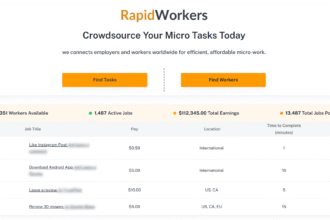The rise of digital healthcare has made remote patient monitoring (RPM) a vital tool for improving patient care and outcomes. By providing real-time data and allowing for continuous observation, RPM helps practices stay connected with patients, even from a distance. However, integrating this technology into your practice requires careful planning and execution. With the right approach, you can enhance patient engagement, reduce hospital readmissions, and offer more personalized care. Here are five key steps to ensure a smooth and successful implementation of remote patient monitoring in your practice.
1. Assess Your Practice’s Needs and Objectives
Before implementing remote patient monitoring, it’s important to assess the specific needs and objectives of your practice. Identify the types of patients who would benefit most from RPM, such as those with chronic conditions or high-risk individuals requiring frequent monitoring. Define clear goals, whether they focus on improving patient outcomes, reducing emergency room visits, or enhancing preventive care. Understanding your practice’s unique requirements will help tailor the RPM program to meet both patient and operational needs. Establishing these objectives early on ensures that the program is aligned with the overall goals of your healthcare services.
2. Select the Right Technology and Platform
Choosing the right technology is crucial to the success of your remote patient monitoring program. Look for a platform that integrates seamlessly with your existing electronic health record (EHR) system and provides real-time data access for both healthcare providers and patients. The platform should be easy to use for both staff and patients, offering intuitive interfaces and clear reporting features. When selecting devices, consider their accuracy, ease of use, and compatibility with the platform. Partnering with a reliable remote patient monitoring company can help you find the best solutions and ensure that the technology is up to industry standards.
3. Train Your Staff and Educate Patients
Once the technology is in place, proper training is essential for both staff and patients to ensure the program runs smoothly. Staff should be well-versed in the RPM platform, understanding how to set up devices, interpret data, and respond to alerts. Training should also cover how to address any technical issues that patients may encounter. On the patient side, provide clear instructions on how to use the monitoring devices and access their data through the platform. Education is key to patient engagement—patients are more likely to comply with the program if they understand the benefits and feel confident using the technology.
4. Develop a Workflow for Monitoring and Response
Creating an efficient workflow for monitoring patient data and responding to alerts is a critical step in the RPM implementation process. Designate specific team members who will be responsible for tracking patient data and following up on abnormal readings. Establish protocols for when and how to intervene, whether that’s through phone calls, video consultations, or in-person visits. A clear and well-organized workflow ensures that the data collected from RPM devices translates into actionable care. Regularly review the workflow to ensure it remains efficient and that any adjustments can be made to improve the overall effectiveness of the program.
5. Continuously Monitor and Evaluate the Program
To ensure long-term success, it’s important to continuously monitor and evaluate your remote patient monitoring program. Track key metrics, such as patient engagement levels, adherence rates, and clinical outcomes, to measure the program’s effectiveness. Solicit feedback from both staff and patients to identify areas for improvement and address any issues promptly. Regular evaluations will help you refine the program, ensuring it continues to meet the needs of your patients and your practice. Over time, this iterative approach allows you to make data-driven decisions that improve patient care and streamline operations.
The Bottom Line
Successfully implementing remote patient monitoring in your practice requires thoughtful planning and execution. By assessing your needs, selecting the right technology, and training both staff and patients, you can lay the groundwork for a seamless RPM program. Developing clear workflows and continuously evaluating the program will ensure that it remains effective and beneficial to both your practice and your patients. With the support of a reliable remote patient monitoring company and the right strategies in place, you can harness the full potential of RPM to enhance patient care and improve clinical outcomes














